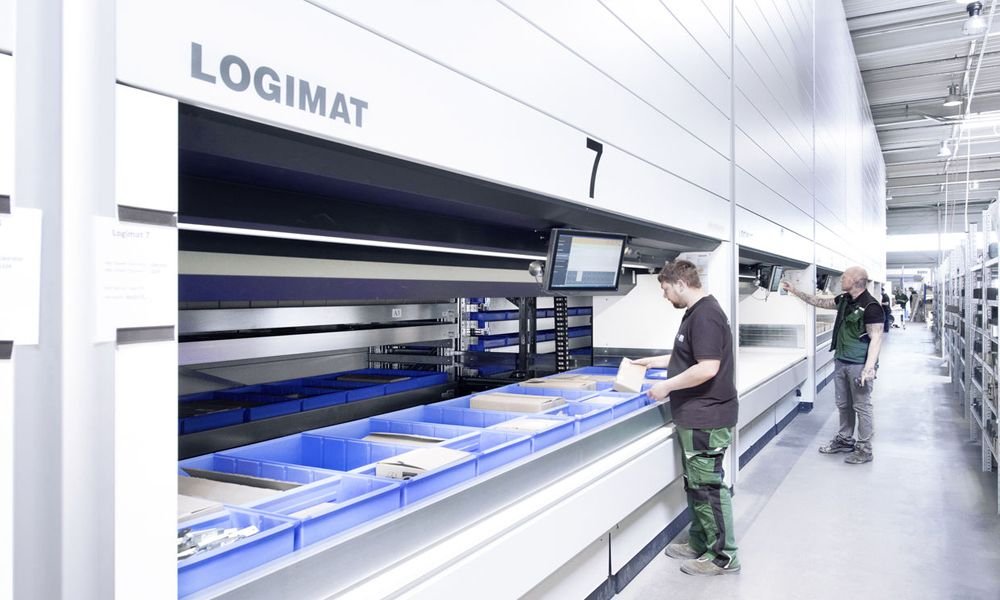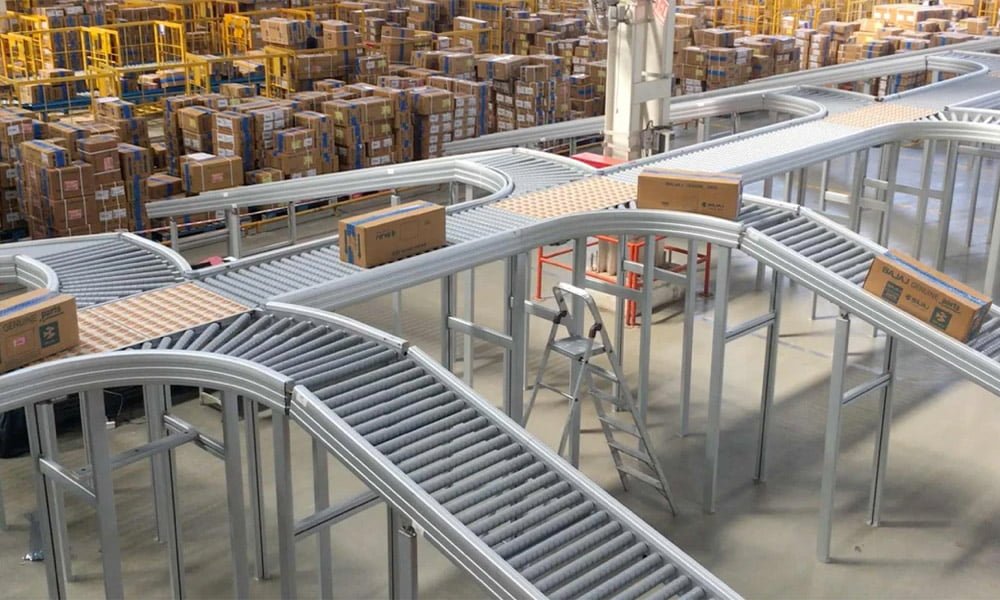The Swiss company Avancon SA has launched a conveyor system, which allows customers to save costs for controlling and programming. It controls itself, even very large and complex material handling systems in logistics centers. The key economic advantages are that a control cabinet or cable ducts are not necessary. Integration into a higher bus / IT topology is incredibly easy.
Thus, an automatic conveyor system operating without human intervention is the epitome of “automation” and that is what has been implemented quite simply with the new ZPC system from Avancon. It is universally applicable and for the operator energy and cost saving. This system is manufactured solely as a ZPC concept (ZPC = Zone Powered Conveyor). This means everything refers to a single zone, the control system, the photo-sensors and the brushless DCMotor.
The great thing is that no cables are pulled on the construction site and additional control cabinets and cable ducts are omitted. This reduces the investment costs. “We want to save our customers work and costs. That’s why we’re building this ZPC concept, a zoned propulsion system.
The advantages are obvious, both for the conveyor manufacturer and for the system integrator. This concerns the planning, the realization, the maintenance and last but not least the energy savings. It is very simple and controls itself, so it works completely autonomously.” Says
Dr. Daniele Gambetta, the technical manager of Avancon SA. “Generally speaking, a huge ZPC-conveyor system can be operated, without a higher bus or IT infrastructure. Since we only use this concept, it does not cost more, because these ZPC systems are already pre-programmed. This means that no further programming effort and no central control cabinet, as well as no cable ducts on the construction site are necessary. However, the ZPC controller can communicate with almost any higher bus/IT architecture.”
Externally everything is smooth, closed and with a modern design. You don’t see whether a motor nor a control system or cables. Everything is hidden, safe and clean installed within the profile frame, even the power supply and in the future also the brushless DC motors. However, if one still wants to intervene into the system, make processes visible or wants to receive a warning signal when an element fails out or a motor is overloaded, Avancon has a ready made solution for this. But not only, if further devices such as lifts, stacker-cranes and retrieval machines, packaging and palletizing machines or robots have to be integrated, this is also possible, provided that other bus systems for this purpose have already ben foreseen.
“OK, that’s easy,” says Denis Ratz, CEO of Avancon SA, “Our control system is equipped with the necessary intelligence and is able to communicate with nearly any higher bus and IT architecture. That can be done very easily and without big expenses, too. That’s our advantage. For large systems we are usually very economical, provided that the integrator has understood the system philosophy and follows our guidelines.”
Well, why is Avancon’s ZPC system so easy?
First of all, from a mechanical point of view, all control elements can be mounted without tools, without screws and without cable fixings. This simplifies the assembly and also the maintenance can be carried out quickly and at very low cost.
A maximum of 31 zones of the ZPC system are controlled and monitored by an AS-interface master. If required, the internal ZPC network can also be equipped with an MCC (Main Control Center), which has a preprogrammed processing unit (PLC) and a modular gateway to almost all higher bus/IT systems. Generally, Avancon recommends the MCC for larger and more complex systems. It can also take on a lot of other features. Mostly several AS-interface masters are necessary, but they can communicate with each other in
the ZPC network, so that there are no limits to the size of a material flow system. If you accept the ZPC system as it is, you save a lot of additional programming time and cost. However, the MCC can continuously provide all data through the gateway to higher levels. Each ASi master has the current status of all its managed and controlled up to 31 zones (62 slaves) – every 10 meters. Furthermore, the MCC can also receive and process commands of a higher level via the integrated gateway. You only need two ‘bits’, as move to the right (01), left out (10) and straight ahead (00). Everything else is done by the ZPC network independently.
There is even an easier way. Take the following example: a higherlevel bus or IT system is connected to the barcode readers, attached to the conveyor system. After evaluating the read barcode of a unit to be conveyed, the higher-level system issues the instruction to the ZPC network to move it in the determined direction. ASi diverts. – Finished.
Thus, the higher level system knows in which side line of this unit is and – if it is then detected at another barcode reader again, it can be further directed as described. So it is tracked to its destination. That’s easy, right?
Machines and operations integrated in the conveyor system, such as strapping machines, label dispensers, scales, palletizers, robots, etc., can be easily integrated in various manners.
Albert Einstein said: “Make everything as simple as possible, but not simpler.” Here one should add: “but not more complicated, please!” It is absolutely not necessary to repeat and program all commands at a higher level, because ASi automatically executes anyway.
As a specialty, a simple ZPC-control profile is now offered to those manufacturers, who still have an older construction of their conveyors, but understandably like the ZPC concept. This makes it possible to mount all the controls without tools and to use completely the patented ZPC concept as described above. The ZPC-control profile can effortless be attached anywhere with just a few self-tapping screws.
Do you want to get it even simpler?





